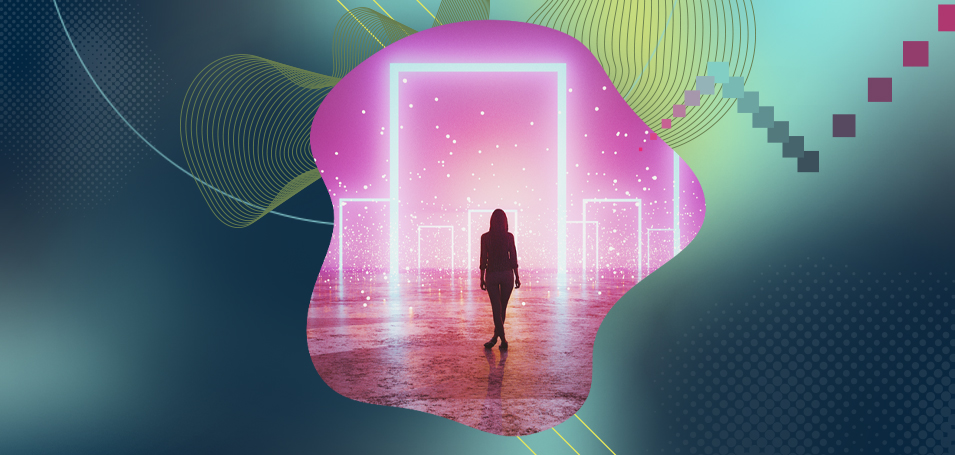Are you creating and designing learning courses for customer education? Then you know how difficult it is to continually come up with engaging content that will resonate with your audience. It’s as if you need to tap into the psyche of your user base, a daunting thought given the complexity of personalities. But in the end, we’re all human.
Design and psychology go hand-in-hand. Apple’s success proves that year in and year out. But plenty of companies in other segments do the same: Both the Honda Fit and the Lexus RX are functionally similar objects that let you get groceries, take a road trip, and any number of other driving activities. Yet the first costs $16,000 and the second is $50,000. As designer Aarron Walter points out, they’re “emotionally different,” and people are willing to pay a premium “because of the feeling that’s associated with that.”
Walter, author of Designing for Emotion, recently updated his concise classic to share new observations about designing for humans. He’s not just an academic theoretician. He serves as vice president of design publishing for InVision, a SaaS company that produces digital product design applications, and a new Thought Industries customer. He knows what’s required on the front line, whether you’re doing product or web design, writing copy, developing content strategy, even coding products. And his book includes plenty of examples from SaaS firms you will recognize: 23andMe, Airbnb, Mailchimp, Slack, and WealthSimple among others.
Softening Sharp Emotions
The goal of designing for emotion, as the book explains, is to “facilitate human-to-human communication.” If you’re creating software, that means the mechanics — the computer aspects — must recede “into the background, and personalities rise to the surface.”
Think about an app you personally love to use. The functionality is top-notch; it works the way you’d expect it to. But there’s more to it than that. Probably the app has a personality that translates into a form of self-expression for you. Designing that personality successfully, says Walter, lets the product stand out in an ever more crowded market, create long-term memory for users, help users find their “tribe,” and invite their passion.
Evoking design for emotion, he adds, has never been more needed for creating successful products.
“Especially right now, there are a lot of feelings of stress, of anxiety, of fear, of mistrust. As we design products, we can take into account the emotional context of the moment and design something that addresses those emotions.” Doing that well, he says, “makes those sharp emotions a little softer. And sometimes it’s a thing that makes us just feel good or makes us smile,” resulting in a product that’s more memorable.”
Two Challenges of Designing for Emotion
The process of designing for emotion poses two big challenges.
- First, is getting stakeholders involved. If you’re in a “large, well-established company,” says Walter, “the idea of developing a new design or brand personality feels like a pretty monumental task” because there are so many people who would have to be involved in that kind of project.
- Second is overcoming the perception that by putting personality into a design, it will end up being “attractive to some groups but not to others.” You’ll be alienating prospective customers.
But as Walter points out, “That’s actually not a weakness. He references a quote in the book attributed to Sam Altman, chairman of seed money funder Y Combinator:
“It’s better to build something that a small number of users love than a large number of users like.”
What you end up with is something that will help your business “do what it’s intending to do, which is create a lasting relationship with your customers and grow your reach.” When people are passionate about a product, he says, “you get loyal customers, you get recurring revenue, you get word-of-mouth marketing and people who want to tell everyone they can about it.”
How to Design for Emotion, Part 1: Talk to Customers
Walter strongly advises that you to talk to customers. Best practice, he adds, “is at least two hours every six weeks.” Whether it’s by phone, in their workplace, or someplace else they hang out (in more normal times), you want to have an informal conversation that will help you “get a sense for who they are and [let you] observe them in their natural habitat.”
How do you make first contact? Walter suggested getting a stream of recent customer interactions, whether that’s through company survey work, customer success or tech support team contacts, or even Net Promoter Score (NPS) customer input. Then reach out via email and say, “We’d love to get to know you a little bit more and talk to you for 30 minutes. Do you have time?”
How to Design for Emotion, Part 2: Define a Persona
If you’ve spent time developing user personas for your learning content, you already have experience that applies to the job of designing products for emotion: coming up with a “design persona.” As Walter puts it, if your website were a person, who would it be?… trustworthy and capable?… a wise-cracking buddy?”
An early example created by Walter was Freddie Von Chimpenheimer IV, the face of Mailchimp, created by a team he led when he worked at that company. Freddie is described as “fun but not childish. Funny, but not goofy. Powerful, but not complicated. Hip, but not alienating…”
To help you go through the paces of that exercise, Walter makes a template freely available for download, and includes a separate document with the design persona for MailChimp itself. But he reminds the reader that there’s “no one-size-fits-all.” “If we stop thinking of the interfaces we design as mere control panels and think of them more as people our target audience wants to interact with,” he writes, “we can craft emotionally engaging experiences that make a lasting impression.”
Pick a Peak Moment
If you’re new to the concept of designing for emotion, Walter has a recommendation: Rather than undertaking a full-on creation of a “huge personality,” start by designing a “moment,” — some aspect that’s critical, such as at the end of an important step in the customer journey (known as the “peak-end rule“). As Walter writes, “The peak at the end of an experience — whether it’s positive or negative — will disproportionally shape our memory of the whole experience.”
How do you pick a peak moment? Turn to customer support tickets, task completion metrics and other measures where people turn away. Figure out what’s going on and develop a response that helps them get in touch with their emotions at that moment.
As an example, there’s a point in TurboTax when users are asked about life changes that could affect their tax status, including the death of a loved one. As a customer who’d lost her husband told the company, “I entered the information…and a screen came up that said, ‘We’re sorry for your loss.'” That simple statement, she said, “was so cathartic… Please pass onto the team how much that one little sentence meant to me.”
How Emotional Design Ties into Customer Education
Walter believes that the use of emotional design plays particularly well in the development of digital training and learning content.
Duolingo offers a great example, he says. “Their goals are to try to get learners through a long session or through multiple sessions so they can learn the language.” The company does that with the use of rewards along the way, such as congratulating learners on achievements and providing them “unlocks” after they succeed with something. If a learner falls off and begins to ignore the program, the company uses notifications and other techniques “to bring you back in.”
Surely, it’s easier to design a personality for a program like Duolingo than it is to embed one into the training programs used by companies creating really technical products. Not necessarily, says Walter. It all depends “on what you’re teaching and who the audience is.”
His advice:
- Make the job seem doable. Take “something that feels insurmountable and requires a huge time investment and break that down into smaller chunks to pull learners in.”
- Look at the length of content. “Instead of having one 30-minute piece, use 10 three-minute pieces,” to help learners “get further into their sessions.”
- Give a reward for completing that three-minute module. Say something that helps “me feel good and makes me want to do the next module.”
- Provide a never-ending supply. Look at Netflix: “When you get to the end of a show, it automatically jumps to the next thing, and so you sit and keep watching.” Or Instagram: “As you scroll through, it never ends — you just keep going.”
Those particular examples may have “nefarious outcomes,” Walter says, because people “get their time sucked away.” But in the case of learning, “that’s a great thing because learners are making it further into their work and they’re learning more.”
Our Complicated Range of Emotions
Walter acknowledges that it’s not easy “to design for anxiety and stress and mistrust and fear — just as it isn’t always easy to design for delight.” But we need to try, he says. “What I want the design community to understand and all those who partner with design is that we are designing products for human beings. We should be designing not just for delight but for the full range of emotions. There’s always a human on the other end of what we’re designing, and humans have a complicated range of emotions.”
Learn more about “Designing for Emotion” and learn about the book club on Aarron Walter’s website.



